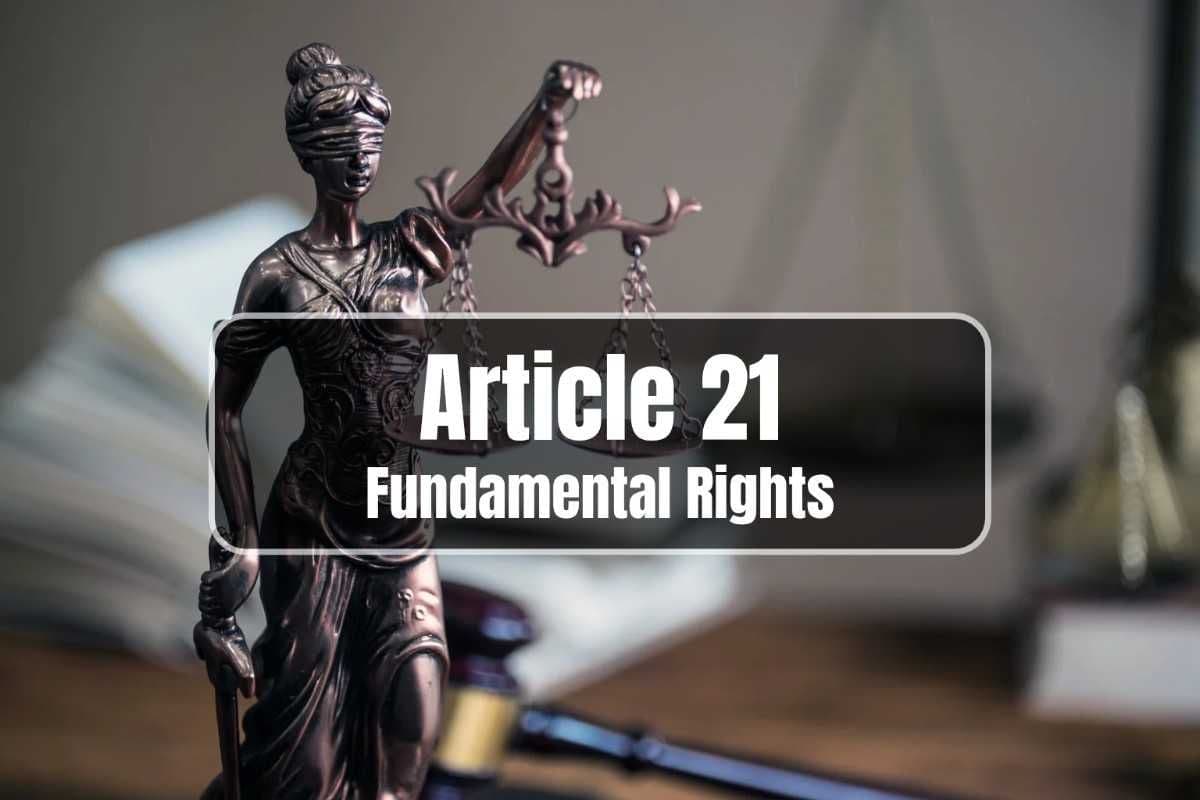The Third Battle of Panipat: A Defining War in Medieval Indian History
Apr, 2025
•4 min read
If you want to understand the fate of empires, study the battlefields where history was rewritten. Among the many battles that altered the course of Indian history, few were as decisive and cataclysmic as the 3rd Battle of Panipat. This colossal clash between the Maratha Empire and the Durrani Empire was a moment that reshaped the political landscape of India.
For UPSC aspirants, studying the 3rd Battle of Panipat is essential as it serves as a bridge between medieval and modern Indian history. This battle marked the decline of the Marathas, paving the way for British expansion in India. Understanding its causes, strategies, and long-term impact provides valuable insights into power struggles, strategic alliances, and the shifting balance of power in the 18th century.
Let's dive deep into this war that forever changed India's political future!

The Events Leading to the 3rd Battle of Panipat
 |
The 3rd Battle of Panipat was not an isolated event but the result of decades of shifting power dynamics in India. To understand why this war happened, it is essential to examine the events that led to it.
The Decline of the Mughal Empire and the Rise of the Marathas
By the early 18th century, the Mughal Empire was in rapid decline. After Aurangzeb’s death in 1707, weak rulers, court conspiracies, and regional uprisings shattered the empire’s control. The once-mighty Mughals had now become mere figureheads in Delhi.
Taking advantage of this power vacuum, the Marathas expanded aggressively under leaders like Peshwa Baji Rao I and Balaji Baji Rao. By the mid-18th century, they had established dominance over vast regions, including Malwa, Gujarat, and parts of the Deccan, positioning themselves as the new power center in India.
Ahmad Shah Durrani’s Invasions and Territorial Ambitions
Ahmad Shah Abdali, also known as Ahmad Shah Durrani, was a powerful ruler from Afghanistan who had his eyes set on India’s wealth. Between 1748 and 1761, he launched multiple invasions, weakening the Mughal north. His objective was twofold: loot India’s riches and establish influence over Punjab and Delhi.
His invasion in 1757 saw him capture Delhi and plunder Mathura. However, instead of ruling directly, he installed Najib-ud-Daula as his agent in Delhi and returned to Afghanistan. Seeing Abdali’s retreat, the Marathas seized the opportunity to assert control.
Maratha Expansion in Northern India and the Road to Conflict
By 1758, the Marathas marched into Punjab, driving out Abdali’s governor and hoisting the Maratha flag over Lahore and Peshawar. This bold move challenged Abdali’s authority, forcing him to return with full force in 1759.
The battle lines were now drawn. Abdali sought to regain control over North India, while the Marathas aimed to replace the Mughals as the supreme power. The struggle for dominance escalated, culminating in one of the largest and bloodiest battles in Indian history—the 3rd Battle of Panipat.
Why Did the 3rd Battle of Panipat Happen? Key Causes Behind the Conflict
Several political, military, and strategic factors led to this decisive war. These causes shed light on the power struggles that shaped India’s history.
- The power struggle between the Marathas and Ahmad Shah Abdali: The Marathas, after the decline of the Mughal Empire, aimed to establish their supremacy in northern India. Their expansion directly challenged Ahmad Shah Abdali’s influence in the region.
- Weakening Mughal authority: The Mughal Empire had lost its control over Delhi and Punjab, creating a political vacuum. Both the Marathas and Abdali sought to fill this power gap, leading to inevitable conflict.
- Maratha expansion in North India: By 1758, the Marathas had taken control of Lahore, Multan, and Peshawar, displacing Abdali’s allies. This provoked Abdali, who saw the Marathas as a major threat to his ambitions in India.
- Formation of anti-Maratha alliances: Ahmad Shah Abdali forged strong alliances with Najib-ud-Daula (Rohilla chief) and Shuja-ud-Daula (Nawab of Awadh). These alliances strengthened Abdali’s position, while the Marathas struggled to secure reliable allies.
- Maratha overconfidence and strategic errors: The Marathas underestimated the combined strength of Abdali’s forces. They also failed to establish strong supply lines, which left them vulnerable when the battle began.
Also read: World History Notes Strategy for UPSC IAS Civil Services Exam Preparation
Prelude to the Battle: The Road to Panipat
The battle was not a sudden event but the result of rivalries, power shifts, and strategic miscalculations.
1. Maratha’s Strategic Alliances and Movements
- The Marathas, under Peshwa Balaji Baji Rao, sought to establish control over northern India, replacing the weakening Mughal Empire.
- In 1758, the Marathas captured Punjab, including Lahore and Peshawar, expelling Abdali’s governor.
- This directly challenged Ahmad Shah Abdali’s influence, forcing him to march towards India in 1759 with a strong army.
- Marathas sought alliances, but the Rajputs, Jats, and Sikhs were hesitant to support them.
2. Negotiations and Skirmishes with Afghan Forces
- Ahmad Shah Abdali formed alliances with Indian rulers, including Najib-ud-Daula (Rohilla chief) and Shuja-ud-Daula (Nawab of Awadh).
- Marathas attempted to negotiate with Abdali but failed due to distrust and territorial ambitions on both sides.
- Minor battles and skirmishes occurred throughout 1760, leading up to the final confrontation.
3. Shuja-ud-Daula’s Alliance Decisions and Impact
- Shuja-ud-Daula (Nawab of Awadh) initially hesitated to support Abdali but later joined him, fearing Maratha dominance.
- His well-equipped troops strengthened Abdali’s forces, tilting the power balance in favor of the Afghans.
Forces Involved: Strength and Composition
Must watch: 100% Revision on Mughal Empire in ONE VIDEO | UPSC Prelims| SuperKalam

The 3rd Battle of Panipat: Key Phases of the Battle and Strategic Maneuvers
 |
The battle began on 14 January 1761 with the Marathas initially dominating using their superior cannons. Abdali’s forces stayed defensive, avoiding confrontation early on.
Phase 1: Maratha Offense (Morning Attack)
- Marathas launched an early attack, using artillery barrages to push Abdali’s forces back.
- The Maratha center led by Sadashivrao Bhau was strong, but their flanks were exposed.
Phase 2: Afghan Counterattack (Midday Turnaround)
- Abdali feigned retreat, luring the Maratha cavalry into an ambush.
- Rohilla cavalry and Abdali’s swift-moving horsemen attacked the exposed Maratha flanks.
Phase 3: Maratha Collapse (Afternoon Carnage)
- Maratha forces ran out of ammunition and struggled with supply shortages.
- Vishwasrao (Peshwa’s son) was killed, breaking Maratha's morale.
- Marathas suffered severe casualties, with most of their forces wiped out by evening.
- Abdali’s hit-and-run tactics and cavalry speed overwhelmed the slower Maratha infantry.
- The Marathas lost over 40,000 soldiers, while Abdali’s losses were comparatively lower.
- Sadashivrao Bhau and most of the Maratha leadership were killed, leading to a complete defeat.
This is what you need next: All Important Terms from History in 1 Video |UPSC Prelims 2024/25

Aftermath and Consequences
The 3rd Battle of Panipat (1761) was one of the most devastating battles in Indian history, not just because of the sheer number of casualties but due to its long-term impact on the political and military landscape of India. The aftermath of the battle reshaped the balance of power, paving the way for British expansion and weakening indigenous Indian forces.
1. Immediate Aftermath: A Devastating Defeat for the Marathas
- The Marathas suffered catastrophic losses, with over 40,000 soldiers killed and thousands taken prisoner.
- Sadashivrao Bhau, the commander-in-chief, and Vishwasrao, the Peshwa’s heir, were killed, leading to leadership collapse.
- Afghan forces conducted mass executions of Maratha soldiers and civilians, marking one of the bloodiest massacres in Indian history.
- The Maratha camp was looted, with women and children among the victims of brutal Afghan aggression.
- Abdali, despite his victory, did not establish lasting rule in India, as he lacked the resources to govern the territory permanently.
2. Political Consequences: Shift in Power Dynamics
Decline of Maratha Power
- The battle crippled Maratha's ambitions in North India.
- Marathas lost key allies, as Rajputs, Jats, and Sikhs distanced themselves after witnessing their defeat.
- They shifted focus back to Deccan, leading to internal power struggles.
- The Peshwa (Balaji Baji Rao) died in 1761, further destabilizing Maratha leadership.
Mughal Empire’s Final Decline
- Although technically victorious, Abdali did not restore the Mughal Empire; instead, he left the weakened empire vulnerable.
- The Mughals became completely powerless, serving as puppets under various regional rulers.
- Delhi remained a symbolic capital, but real power shifted to regional kingdoms and the British East India Company.
Ahmad Shah Abdali’s Retreat and Failure to Rule India
- Despite winning the battle, Abdali did not establish a lasting empire in India.
- His focus remained on protecting his Afghan kingdom, leaving Indian politics open to new power struggles.
- Frequent Sikh uprisings in Punjab after the battle forced Abdali to retreat.
3. Long-Term Impact: British Expansion and the Rise of New Powers
- The power vacuum in North India allowed the British East India Company to expand its influence.
- Marathas, once the strongest Indian force, were no longer able to check British expansion.
- The British used diplomacy and warfare to eventually dominate India.
- By 1770, the Marathas recovered under leaders like Madhavrao I, regaining control over some northern territories.
- However, they never fully regained their earlier strength, allowing the British to exploit their weaknesses in later years.
- Sikh forces filled the power vacuum left by Abdali’s retreat, leading to the rise of the Sikh Empire under Ranjit Singh in the early 19th century.
4. Socio-Economic and Cultural Consequences
Human and Economic Losses
- The battle resulted in one of the highest recorded casualties in a single day of warfare.
- North India faced economic collapse, as trade and agriculture were disrupted for years.
- Delhi and surrounding regions faced severe plundering, affecting local economies.
Fear and Caution Among Indian Rulers
- The horrors of Panipat made Indian rulers more hesitant to confront external invaders.
- The fear of large-scale battles influenced future diplomacy, making Indian kingdoms more defensive and fragmented.
Way Forward: A Lesson in History and Strategy
"Those who cannot remember the past are condemned to repeat it." — George Santayana
The 3rd Battle of Panipat stands as a powerful reminder of how strategic miscalculations, lack of unity, and overconfidence can alter the course of history. The Marathas’ defeat reshaped the political landscape of India, weakening indigenous powers and creating a power vacuum that the British would later exploit.
For UPSC aspirants, Panipat is not just a historical event but a crucial case study on diplomacy, warfare, and the shifting power structures of 18th-century India. Understanding its causes, consequences, and legacy will provide essential knowledge for answer writing in Mains General Studies Paper I.
Practice this PYQ from Mains General Studies Paper I (2014): Third Battle of Panipat: Empire-Shaking Events
Take your UPSC Preparation to the Next Level with SuperKalam!

Meet SuperKalam! Your Super Mentor provides a comprehensive learning ecosystem, you can benefit from focused and disciplined preparation strategies.
Start Now—it's FREE and take advantage of personalized guidance to crack the UPSC with confidence and clarity.
Explore SuperKalam's Resources and set yourself on the path to success!

![PM MUDRA Yojana 2025: Shishu to Tarun [UPSC Notes]](/_next/image?url=https%3A%2F%2Fblog-media.superkalam.com%2FPM_Mudra_Yojana_e5ffe37cf1.jpeg&w=3840&q=75)
